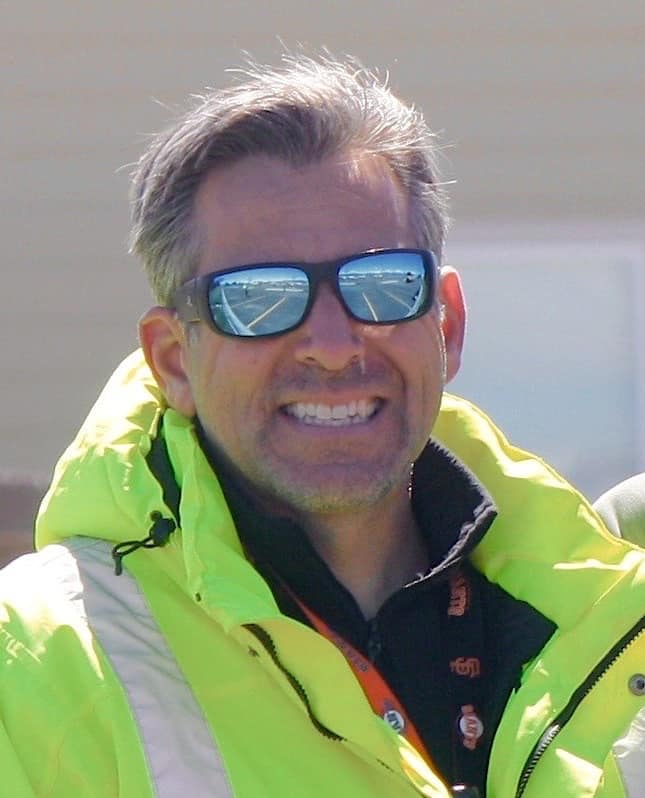It has been a privilege of mine, from time to time, to drive high school football state champions. It is a height of the trip to pull the cord on the bus air horn as we turn into the school, announcing to the entire neighborhood, “We won!” Over the years I have driven many winning teams, teams that lost, and even the occasional state champs. One of the key differences I picked up along the way is the difference between coaching state champions and training run-of-the-mill teams. More broadly, there is a stark distinction between a coach and a trainer.
One of the first characteristics I notice about a coach is the level of their personal investment in the team. They are not on that bus, in a sticky vinyl seat, on a Friday night with the suffocating locker room stench for the money. When you see the way they interact with the students, their personal attention to each and every player, their level of engagement with the game and attention to detail, you cannot come to any other conclusion than this: The coach is personally invested.
This is a key difference between a trainer and a coach. A trainer focuses on running a group of athletes through a series of drills. It is by nature dispassionate. Trainers focus on efficient return on investment. They ask, “How can I get the most trainees through the most skills in the least amount of time with a decent outcome of success?” This is boot camp mentality. By contrast, a coach gets to personally know each of their players. What are their gifts, talents and abilities? What weaknesses need attention? Most importantly, what is the latent potential of this individual and what can I give them to nurture their success? That is the core of being a great coach, being enthusiastically and relationally engaged in an individual to passionately ensure success.
So as I bobbed, weaved, and bounced in my seat, driving my winners back to their home base, I started to imagine how I could apply this to training bus drivers. I had been contemplating over the challenges of being a trainer for the last few weeks. High turnover, laissez-faire attitudes, poor attendance, sickly trainees, status quo driving skills, low testing scores and much more plagued our training department. I’m not sure if I got blinded by oncoming high-beams but I had an epiphany: Apply athletic coaching principles to training bus drivers with the long-term goal of training state champions. I resolved to implement the following six principles:
Principle One: Become passionately engaged with each new driver
I am not a teddy bear kind of person. Getting over my introversion and reserved personality is a real challenge. Recognizing I needed work in this area was a giant hurdle. First, I decide to memorize each of my drivers’ name, especially new trainees. Second, I made a point to eat lunch with my drivers. Third, I made it a goal to learn something unique about each person by asking them about their hobbies. Fourth, I made it my personal mission to mentor them, or find them a mentor, to develop them as a driver. Stepping out of our comfort zone and stepping into personal challenges can fundamentally change a department’s culture, or an organization for that matter.
Principle Two: Regurgitation leads to suffocation
When my kids were young and first learning basic things like the alphabet, they participated in what Benjamin Bloom refers to as lower levels of learning. Specifically, their teachers challenged them to simply remember things. The teacher would show them a picture of a cow, say the word “cow” and ask them to repeat the word “cow.” If they could successfully do that, they got a gold star! Is not most of our training done at this level? We show a picture of a slack adjuster, we say “slack adjuster” and then we expect the student to remember “slack adjuster.” If that is the extent of our creativity, then we have already lost the game. Training that utilizes simple regurgitation as its only teaching method limits a new driver’s success. It suffocates their potential by not nurturing and challenging them to engage in their subject matter.
Bloom’s taxonomy of learning gives us some stairs to step-up onto. At the bottom is “remembering” and “understanding” but at the top of the flight of stairs are higher levels of learning like “applying,” “evaluating,” and “creating.” Rather than asking a driver to identify and say “slack adjuster,” a better approach that engages and compels the new driver is to perhaps show several defective slack adjusters and ask them to evaluate each one for deficiencies. If we have higher expectations for our students, we will experience higher outcomes. Not only will students be able to identify a slack adjuster, but they will be able to analyze and evaluate whether the slack adjuster is damaged and see maintenance about fixing the brake system. The point here is that the level of our training expectations dictates the level that future drivers can think for themselves.
Principle Three: Execute plays, not skills
One way to understand this concept is to comprehend that skills are necessary to execute plays. A good coach builds on the fundamentals. But a great coach does not stop there. They have a vision of skills amplifying and broadening into team play. Naturally, you need to coach a driver on making a safe student stop. However, this does not transpire in a vacuum. Safe student stops need to be executed in heavy traffic, in inclement weather, in conjunction with other buses, and so on. Always keep the big picture, the play if you will, in the forefront of your curriculum.
Principle Four: Ingenuity vs. rigidity
Training is rigid. If you go to the gym, meet with a trainer, they are going to put you through a rigid program of repetition. You will do what the trainer tells you to do and you will not be expected to think for yourself. In fact, that is the attraction of an athletic trainer, they think for you. In essence, you are a robot. Transporting pupils, on the other hand, requires drivers to exercise common sense, sound judgment and quick thinking. They must be resourceful. Fill in the blank, watch a video, check the box, and sign the form are examples of rigid training that stifle creative thinking and problem solving. Being creative in your coaching will create ingenious drivers.
Principle Five: Collaboration leads to inspiration
Trainers focus on an individual; coaches envision a team. A training program that is only concerned with getting each driver through their own program reinforces an “every driver for them self” mindset. By building collaboration and teamwork into your training program, you are inspiring your driver’s to work together. Collaboration builds inspiration. Consider breaking your class into teams. Give them case studies and scenarios to evaluate as a group. Tap into their collective genius to solve real transportation problems.
Principle Six: Your success is our success (or there are no million-dollar bus drivers)
At the end of the day, no driver is going to get a million-dollar contract to drive a bus. There is no pro-bowl for transportation. There are higher levels of motivation at stake than a paycheck. We transport students because we believe every student is entitled to safe, reliable, and expedient transportation. Use this fact to your training advantage. Broadcast a vision to your new trainees that clearly shows that we are all in this together. Transportation is about us, not about me. Utilizing Principle Five, a commitment to collaboration, clearly demonstrates that pupil transportation is not a solo act.
Implementing these six principles will help to ensure your future drivers are successful. An added benefit of coaching in a collaborative, creative and caring atmosphere is that your drivers will most likely stick around longer because your work environment will become much more positive.

Robert Leach is a Transportation Supervisor at Academy District 20 in Colorado Springs, CO. He is responsible for recruiting, training, and relief/substitute drivers. In 2017, he was named “Colorado’s Best Trainer” by the Colorado State Pupil Transportation Association. Robert writes and teaches frequently on organization development, strategic planning and business ethics. He can be reached at robert.leach@asd20.org.
















